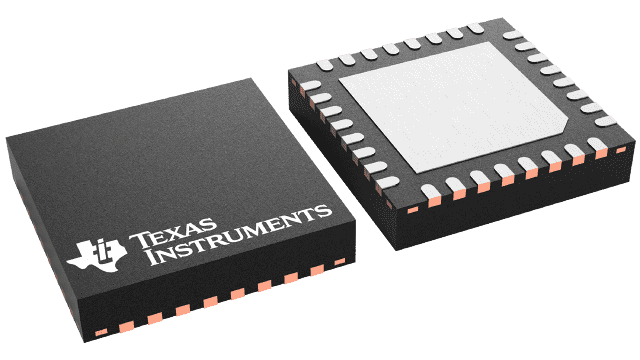 Audio
Audio

TAS5825MRHBR
Texas Instruments

The TAS5825M is a high-performance, stereo closed-loop Class-D with integrated auido processor with up to 192-kHz architecture.
The powerful DSP audio processing core support several advanced audio process flows. Even with 192-kHz architecture, TAS5825M provide a rich processing, such as 2×12 BQs, volume control, audio mixer, 2 Band DRC and a Full Band AGL. With 48-kHz or 96-kHz architecture, an integrated SRC (Sample rate convertor) detects the input sample rate change and auto convert to the target sample rate which DSP is running to avoid any audio artifacts, these process flows support richer processing, such as 2×15 BQs, 3-Band DRC, Full-band AGL (Automatic Gain Limiter), Smart Amplifier Algorithm (Speaker Thermal/Excursion Protection), Bass enhancement, Spatializer, THD manager and so on.
Features:
- Flexible Audio I/O:
- Supports 32, 44.1, 48, 88.2, 96, 192 kHz Sample Rates
- I2S, LJ, RJ, TDM
- SDOUT for Audio Monitoring, Sub-Channel or Echo Cancellation
- Support 3-Wire Digital Audio Interface (No MCLK Required)
- Efficient Class-D Operation
- Greater than 90% Power Efficiency, 90 mΩ RDSon
- Support Multiple Output Configurations
- 2 × 38W in 2.0 Mode (6-Ω, 24V,THD+N=1%)
- 2 × 30W in 2.0 Mode (8-Ω, 24V,THD+N=1%)
- Excellent Audio Performance:
- THD+N ≤ 0.04% at 1 W, 1 kHz, PVDD = 12 V
- SNR ≥ 107 dB (A-weighted), ICN ≤ 45µVRMS
- Flexible Processing Features
- 3-Band Advanced DRC+AGL
- 2×15 BQs, Dynamic EQ
- Sound Field Spatializer (SFS)
- 96-kHz/192-kHz Processor Sampling
- Smart Amplifier Algorithm for Bass Enhancement and Speaker Thermal/Excursion Protection
- Flexible Power Supply Configurations
- PVDD: 4.5 V to 26.4 V
- DVDD and I/O: 1.8 V or 3.3 V
- Excellent Integrated self-protection:
- Over-Current Error (OCE)
- Cycle-By-Cycle Current Limit
- Over-Temperature Warning (OTW)
- Over-Temperature Error (OTE)
- Under/Over-Voltage Lock-out (UVLO/OVLO)
- Easy System Integration
- I2C Software Control
- Reduced Solution Size
- Small 5 x 5 mm Package
- Less Passives Required Compare to Open Loop Devices
- No Bulky Electrolytic Capacitors or Large Inductors Required for most Applications
TAS5825MRHBR Inventory
by: Texas Instruments








